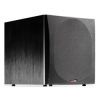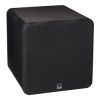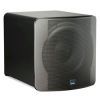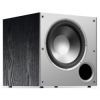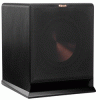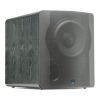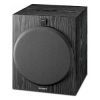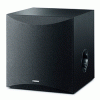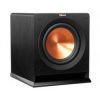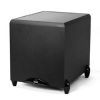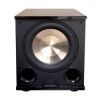| Overall | Audio features | Extensive connection | Control | |||
|---|---|---|---|---|---|---|
| SVS SB-3000 | 8.6 | 8 | 8 | 10 | See price | 53 |
| SVS SB-1000 | 7.6 | 7 | 8 | 8 | See price | 7 |
| Polk Audio PSW505 | 7.6 | 7 | 8 | 8 | See price | 2 |
| SVS SB-2000 | 7.3 | 7 | 7 | 8 | See price | 22 |
| BIC America F12 | 7.3 | 6 | 8 | 8 | See price | 4 |
| Klipsch Reference R-10SWi | 7.3 | 6 | 8 | 8 | See price | 32 |
| SVS PB-1000 | 7.3 | 6 | 8 | 8 | See price | 21 |
| Dayton Audio SUB-1200 | 7.3 | 6 | 8 | 8 | See price | 11 |
| Audioengine S8 | 7 | 6 | 7 | 8 | See price | 34 |
| Definitive Technology ProSub 1000 | 7 | 7 | 8 | 6 | See price | 17 |
The presence of a special bass player in a stereo system is a hotly debated issue, but in a home theater, this device cannot be dispensed with, even if it is a simple set. A lot depends on the quality of the subwoofer. Therefore, one should carefully approach its choice. The best powered subwoofer will allow you to enjoy a clear sound and rich bass while listening to your favorite tracks. High-quality acoustics dramatically changes the experience of music for the better, so many today pay attention to the choice of speakers and subwoofers for a home theater, music center. A large assortment of different models is on sale - for small and large rooms, concerts. All models differ in size, technical characteristics, frequency range, and other features.
If you decide to choose the best home powered subwoofer for yourself, then this means that you have specific requirements and want to achieve a specific result. In this regard, it is necessary to carefully approach the choice of technology because each model has its own characteristics and characteristics.
We have compiled a rating of the most interesting, in our opinion, powered subwoofers of a decent level.
Active vs passive subwoofer
Subwoofers reproduce bass, but what is the difference between active and passive systems?
- Passive subs are laconic simplicity of design—the case and speaker, which connects to an external amplifier - nothing more
- The design of the active subwoofer includes a housing, speaker and amplifier
Thus, if the developer has already taken care of the buyer in the model of the active subwoofer, then in the case of the passive model, the amplifier will have to be purchased. However, you can find kits that include a passive subwoofer and a separate amplifier, selected by the same manufacturer. Be sure to include a set of wires in this set. Also, be aware that 95% of subwoofers are active.
Active subwoofer pros and cons
- Do not require an external amplifier
- As simple as possible to connect
- You can directly connect speakers to them
- The case heats up very much, which can adversely affect the basic electrophysical properties of the subwoofer, which directly leads to a decrease in sound transmission
- Sensitive to high volume, during prolonged use at the peak, the case may overheat, even if the subwoofer fails
Powered subwoofer reviews
SVS SB-1000 - best overall

SVS packaged a compact SB-1000 subwoofer with a 12-inch front-firing driver, two high-quality ferrite magnets, and built-in FEA motor technology with high power output with extremely low distortion. The light conical material of the long-stroke driver reproduces subtle sound tones and massive low-frequency effects with lively realism. The sturdy rubber casing provides long-lasting performance, even when the subwoofer pushes to its characteristics for a long time, making the SB-1000 the ideal choice for serious music lovers or home theater lovers as far as this is the best powered subwoofer from the existing ones.
The main component of the SB-1000 subwoofer is the built-in SVS Sledge STA-300D amplifier with a sophisticated DSP that's ideal for a unique driver and cabinet configuration, as well as an equalization curve optimized to improve transient mode and room gain. The ability of the SB-1000 subwoofer to remain faithful to the original content is a feature typically reserved for much more expensive subwoofers. Conservatively designed for 300 W RMS, maximum power 700 W, the Sledge STA-300D amplifier supports precise subwoofer control at all drive levels. The advanced DSP mechanism also allows fine-tuning of sound reproduction, as well as easy tuning and integration into any stereo system or home theater. 
Temperature control is critical when working with such a powerful amplifier and motor in a compact sealed enclosure, which is why SVS implemented a unique ventilated gear and an efficient, powerful voice coil to support the SB-1000 subwoofer without affecting performance or noise. The case is firmly fixed and soundproofed, so the bass you hear is always light and clean, even at the highest levels of transmission. The SB-1000 is the lightest and smallest SVS subwoofer, making its frequency response from 24 Hz to 260 Hz ( /- 3dB) even more impressive.
Key specs
- Power (RMS): 300 W
- Driver size: 12"
- Driver placement: front
- Frequency response: 24-360 Hz
- Official website
- Full specs
Pros
- The subwoofer produces high-quality sound in both musical and cinema mode while providing sound pressure and bass depth comparable to significantly larger models
- It looks discreet, but modern, and assembled, by the way, very high quality
Cons
- If you approach the issue of quality very meticulously, you could probably get a little more musicality or a little more power
- Some users will not appreciate the bright LED
SVS SB-2000 - best performance

The best powered subwoofer for home theater in terms of performance is equipped with manual control technology from the flagship SVS 16-Ultra series. Now the series includes three models: SVS SB-2000, PC-2000 Pro, and PB-2000 Pro. The junior SVS SB-2000 fit in a cubic case with a side of only about 38 cm, while playing from 20 Hz. The case is equipped with a SoundPath system, the model with unevenness - 3 dB works up to 16 Hz.
The unit is built on the basis of a 12-inch ventilated driver with an aluminum diffuser and a double magnet in a cast aluminum frame of a patented geometry, which ensures “perfect piston movement.” A Class D Power Sledge STA-550D amplifier is installed on discrete MOSFETs in the output stage. The manufacturer talks about high currents and more than 1,500 watts of peak power at an “incredibly low distortion level.” The signal for the amplifier is processed by a 50-MHz DSP with 56-bit filtering. The SVS Subwoofer DSP Smartphone app, available not only for Apple iOS and Android devices but also on Amazon devices, is designed to wirelessly control the 2000 series subwoofers. There are volume control, tuning, and selection of user presets, 3-band parametric equalizer, low-pass filter, phase, polarity adjustment, correction of the influence of the room, port settings. 
In addition, there are buttons and an LED Intelligent Control Interface (ICI) on the back of the amplifier, which first appeared on the 3000 series of SVS subwoofers. ICI also allows you to control the volume, phase, and other parameters of the system.
Key specs
- Power (RMS): 500 W
- Driver size: 12"
- Driver placement: front
- Frequency response: 19-220 Hz
- Official website
- Full specs
Pros
- The beautiful appearance of the device is maintained even when the dust screen is removed
- Dark coloring gives the device the appearance of an unremarkable household appliance
Cons
- The bottom legs are a bit flimsy
Polk Audio PSW10 - best budget

Here we will talk about the best budget powered subwoofer. The front panel without a mesh pleases the eye with a pretty silver color. It houses a 25 mm speaker with a polymer composite diffuser with a concave dust cap, as well as a round FI port of a rather large diameter. The power of the amplifier is low - 50 watts. The knobs for adjusting the level and cutoff frequency of the low-pass filter, stereo, and linear inputs are output to the rear panel. The output is only high-amplitude.
It’s nice to hear how, when you connect the PSW-10, the area of the frequency foundation is filled with pure bass energy flows. In the sound of the subwoofer, power and quality properties are perfectly harmonized. You can adjust the gain over a very wide range, and the bass is neither sluggish nor muddy or hard. PSW-10 is one of the few devices in respect of which we can talk about transparency of the bass. The subwoofer operates in its field energetically, powerfully, and correctly. The model was not difficult to configure. The proximity of the character of bass to neutral allows us to predict good compatibility with many shelving speakers. According to our data, PSW-10 works ideally with the speakers recommended by the manufacturer from its catalog. 
PSW10 is a good combination of power and restraint. The first is manifested by crushing dynamics in the entire bass band (slack is felt only at critically low frequencies, which, in theory, should nevertheless be on the shoulder of its 30-centimeter bass). The second is in the perfectly damped bass aftertone transmission. A specific feature of this model is a slightly crumpled “fast” speaker. The PSW10 blow will transmit softly, but at the same time, it will not torment the hearing with belated low-frequency peals, like some of its rivals.
Key specs
- Power (RMS): 50 W
- Driver size: 10"
- Driver placement: front
- Frequency response: 35-200 Hz
- Official website
- Full specs
Pros
- Correct reproduction of bass after-tones
- Advanced connectivity eases the usage of this subwoofer
Cons
- The potential of a 30-centimeter driver at critically low frequencies is not fully disclosed
- Softened "fast" dynamics
BIC America F12

This is, to our knowledge currently, one of the biggest and most powerful subwoofers that can be acquired for this budget. Any time a manufacturer fully discloses the power specs, that’s a good sign. With 150 W continuous power, a response floor of 25 Hz, and a 90 sensitivity rating, not only will this get plenty loud yet also it will produce the full range of bass quite nicely. Really high-end subwoofers will start to go below 20 Hz. However, if you go that route, you’ll find yourself quickly out of the budget-tier category.
The grainy black surface is otherwise attractive boilerplate. Nevertheless, this will aesthetically blend nicely with most speaker sets. 
Active subwoofers like this one are easy to set up. Just plug it into any standard receiver with an RCA cable.
Key specs
- Power (RMS): 150 W
- Driver size: 12"
- Driver placement: front
- Frequency response: 25-200 Hz
- Official website
- Full specs
Pros
- I like room filling sounds and clarity
- At low levels, this subwoofer delivers that with faint sound leakage that can be heard out to the curb
Cons
- It can get worryingly hot at high-usage twice. I was not able to use it for more than 4 hours heavily at a time
Polk Audio PSW505

The driver located on the front panel of the American home theater powered subwoofer makes a great impression: the 300th head with a cellulose diffuser coated with a polymer layer, a flat central dustproof insert, and a wide polymer suspension. The magnetic screen allows you to place the device close to the TV or even use it as a stand under 25.
The on-board amplifier develops power up to 300 W in continuous operation at peak 460 - very good for the AV class. The weight of the device, of course, is not small - a transformer power supply is huge. There is a mode of automatic inclusion "on a signal," and the subwoofer is turned off when it is absent for 15 minutes, the casing is mounted on metal supports. 
The sub does not dig very deep, but the relevance of low bass for real home conditions is a big question. The PSW505 is a good dynamic theater unit with a solid power reserve.
Key specs
- Power (RMS): 250 W
- Driver size: 12"
- Driver placement: front
- Frequency response: 25-160 Hz
- Full specs
Pros
- I'm surprised at the quality of the bass that this 12" delivers
- The build quality is solid
Cons
- In a week something inside the amps had burnt out or failed
Buying guide
How to install a powered subwoofer
Prior to you get started, find a suitable place to mount your sub because a built-in amplifier generates heat. So, find adequate ventilation. It is important.
The powered model of subwoofers does not come with the necessary wiring, so purchase the wiring kit and fuses you'll need.
- Disconnect the negative battery terminal to protect your gear and yourself during installation
- Run the power cable to the powered sub from the battery
- Run the turn-on wire and signal cables. Both RCA signal cables and the turn-on wire need to be attached to your stereo. Run these wires behind the dash to your stereo. The turn-on cable relates to a remote turn-on wiring in your stereo wiring harness. It's usually blue. Confirm this with your own instruction. Plug the RCA wires into the suitable RCA outputs
- The next is the ground wire. This part should be connected to the vehicle's chassis. Look for a nearby bolt that you can fasten the ground cable to. The ground wire terminal should be in contact with the vehicle's bare metal. Sand away any paint at the contact point for the best connection.
- Now, mount your powered sub and make your connections. Try to use gentle curves with your wires and cables when possible to prevent unnecessary wear and tear
How to connect subwoofer to receiver without subwoofer output
Set the speakers to the "left" or to the "right"
Before starting, learn everything about the management of your AV receiver bass. In order to do this, set all the center, main (both front and left) speakers either and rears, in the large group or small group based on their output powers.
Set the “Main LFE” on your subwoofer
The ‘bass out’ piece of your AC receiver supports you in realizing when and how you can manage your subwoofer. Next, set the ‘mains LFE’ for providing your subwoofer to sound when the front speakers are arranged to large.
Use the preamp output
When you see the pre-out, apply a couple of interconnects from the AV receiver to the subwoofer.
Use speaker wires to connect the subwoofer to the receiver
Attach speaker wires to the front left and right speaker terminals of the receiver. After that, connect those front left & right speakers to the speaker terminal of the subwoofer.
-
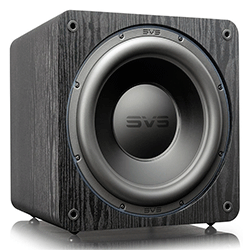
SVS SB-3000
- SVS
- | 1000
- 80
-

SVS SB-2000
- SVS
- | 700
- 208
-

BIC America F12
- BIC America
- | 300
- 1980
-
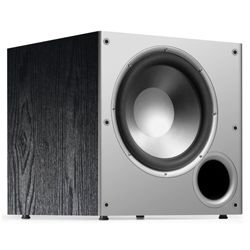
Polk Audio PSW10
- Polk Audio
- | 200
- 9215
-
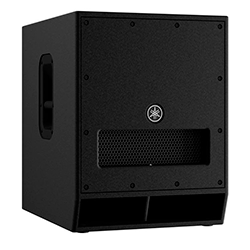
Yamaha DXS15 MKII
- Yamaha
- | 900
- 7
-
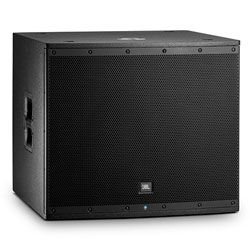
JBL EON618S
- JBL
- | 1000
- 79
-

Audioengine S8
- Audioengine
- | 400
- 267
-
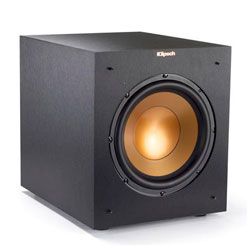
Klipsch Reference R-10SWi
- Klipsch Reference
- | 300
- 281
-
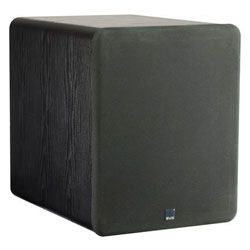
SVS PB-1000
- SVS
- | 500
- 241
-
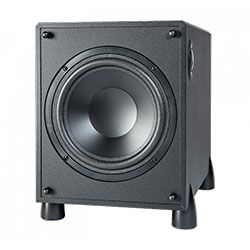
Definitive Technology ProSub 1000
- Definitive Technology
- | 500
- 95
-
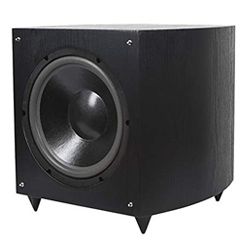
Monoprice 9723
- Monoprice
- | 200
- 184
-
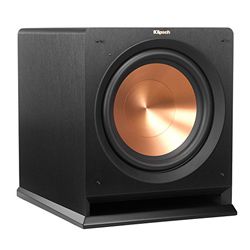
Klipsch R-112SW
- Klipsch
- | 400
- 331
-

Dayton Audio SUB-1200
- Dayton Audio
- | 200
- 184
-
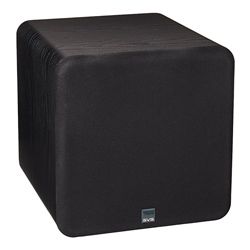
SVS SB-1000
- SVS
- | 500
- 189
-
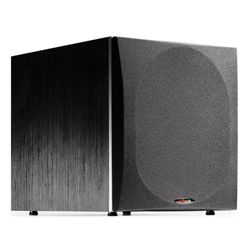
Polk Audio PSW505
- Polk Audio
- | 300
- 2983
-
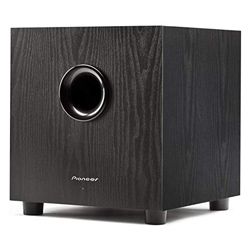
Pioneer SW-8MK2
- Pioneer
- 716
Popular subwoofer comparisons
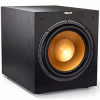
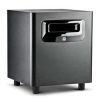
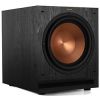


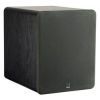
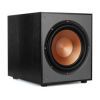


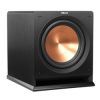
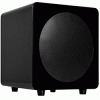
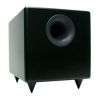


Recent reviews
